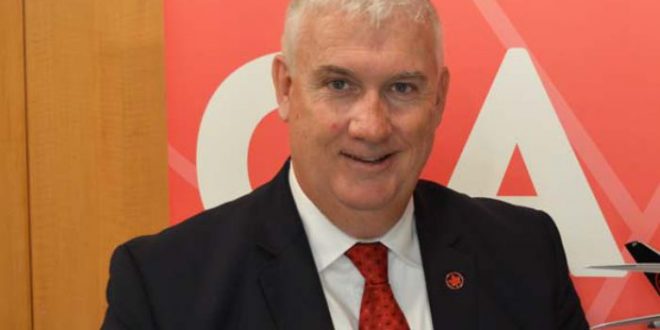Air Canada continues to invest in the India market, not just in terms of new and expanded direct services but also through the number of airplanes deployed here. This, says Duncan Bureau, Vice President, Global Sales, Air Canada, represents over $500 million in terms of capital deployment.
Hazel Jain
Q) Where does India figure in the scheme of things for Air Canada?
In terms of India, we are extremely pleased to have started our new Mumbai-Toronto direct non-stop service, four times a week starting July 2, 2017. Our advanced bookings look good too. We are very happy with the demand and we would certainly like to see that grow into higher frequency. That would then complement our operations for services from Toronto to Delhi and Vancouver to Delhi.
Q) Does that mean the airline will increase its investment in the market?
Air Canada is very bullish on India. We have tremendous support here from the business community. We continue to invest in the market. If you look at the amount of capital investment that Air Canada has made into this market in terms of the number of airplanes deployed here, it represents over $500 million in terms of capital deployment.
Q) Why has India become important for Air Canada?
If you look at the capacity that we have put in to this market in a very short time, India represents a very strategic investment for us. We have a brand new airplane on the additional frequency linking Mumbai, in fact, the airplane that I came on was 10 days old. So we have our best equipment coming into India. It is our 787-900 series airplane, which is the newest addition to our fleet. This in itself indicates that we are committed to this market. We could have deployed them anywhere in the world, but we always look at what our returns on investment capital would be if we deploy them into India as against deploying it somewhere else in the world. This is why we made a choice of coming to Mumbai and increasing our capacity into Delhi which we have done in the last 18 months.
Q) Would you be adding more cities to the India route?
We are constantly looking at new markets and although we have no announcements just yet, we’re constantly looking at opportunities here. There are many cities in India that we find very attractive and we are in discussions with a number of different airports right now.
Q) What about connecting to South India directly?
Currently, we have connections to South India through our SPA agreements, although we don’t have any direct service there. But we are looking at new markets and South India is the market we would consider when adding new destinations.
Q) What is your promotional strategy for India?
We are very happy with the load factors right now. Once you get to a certain load factor, the next focus for any airline would be to improve yield. That would come in the form of the fact that we have a really good business-class product, with a very strong premium economy product. Our strategy will be to have as many products on as many shelves as possible. So we leverage both, the traditional high street agency, TMCs and OTAs, as well as our own website. We have competitive pricing in the market and a lot of partnerships in the market through our GSAs and travel agency partners.
Q) How has the direct competition affected competition?
Prior to our direct service to India, we were first flying to Europe and then to India through one of our partners. Now, with the non-stop service, people want to fly non-stop on Air Canada. This suggests that we have taken a significant share away from the competing carriers who are doing a one stop over another market, whether it is the Middle East or Europe. Non-stop service is very attractive, particularly to the business travellers as they want to get work done while flying.
Q) How is Air Canada performing globally?
Air Canada has been one of the fastest-growing airlines in the world in the last five years. In 2009, we were doing about $9 billion in top-line revenue. In 2017, we will do $16.3 billion. So we have almost doubled our size in the last six or seven years. Our plan is to grow Air Canada to $20 billion by 2020. That means that we will be operating in 260 markets with a brand new fleet. So, by 2020, we will have replaced a vast majority of our fleet with the narrow-body 737 Max aircraft. We have 65 of those on order. We will have the C series, of which we have ordered 90. Then we will have a full 787 to complement our fleet; we have ordered 35 of those with the options of up to 50 of those aircraft. Again, we will have re-fleeted a lot of our Airbus equipment and some of that equipment will leave the organisation, while some will move in to Air Canada Rouge. Air Canada continues to invest in
 TravTalk India Online Magazine
TravTalk India Online Magazine





